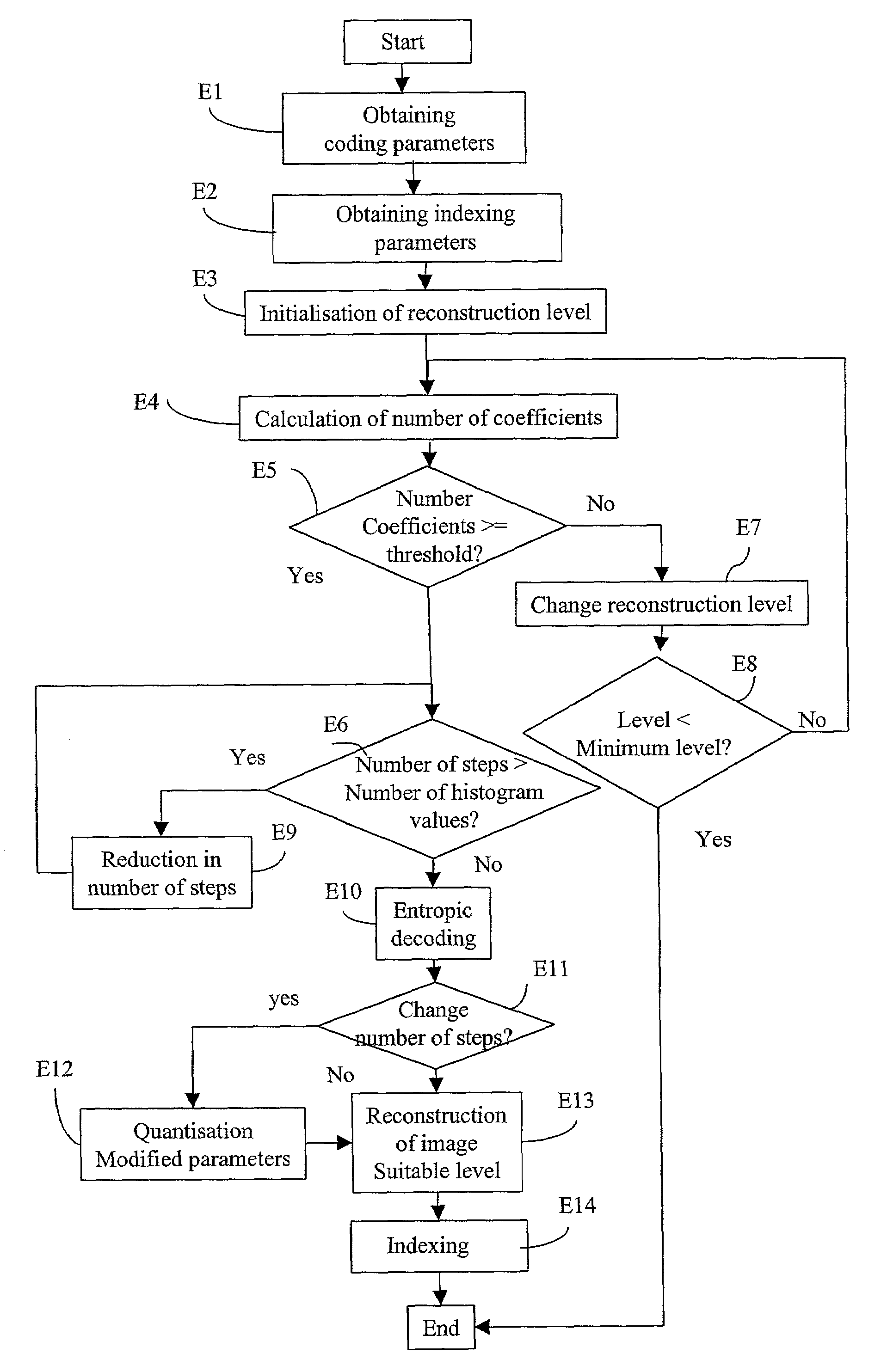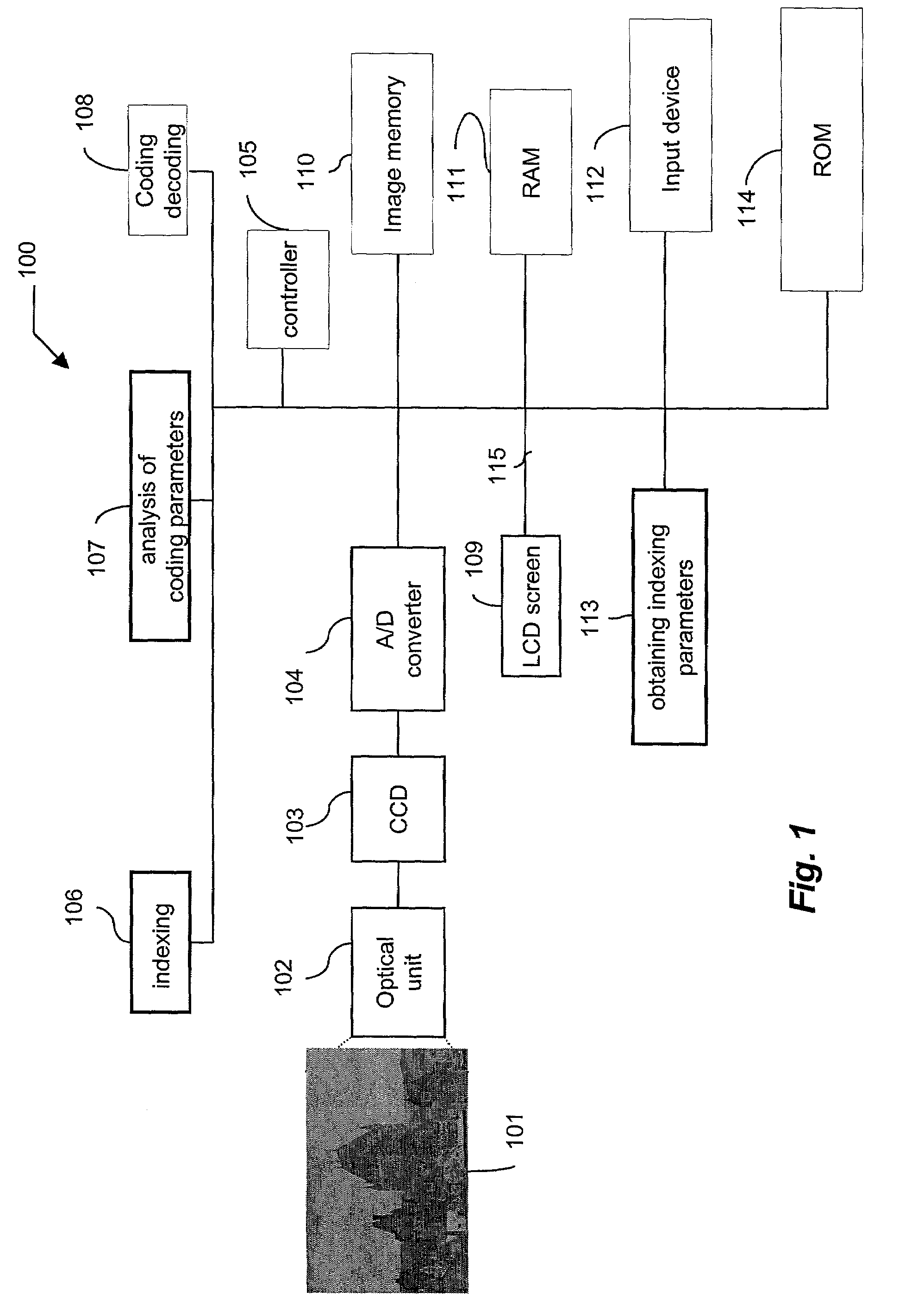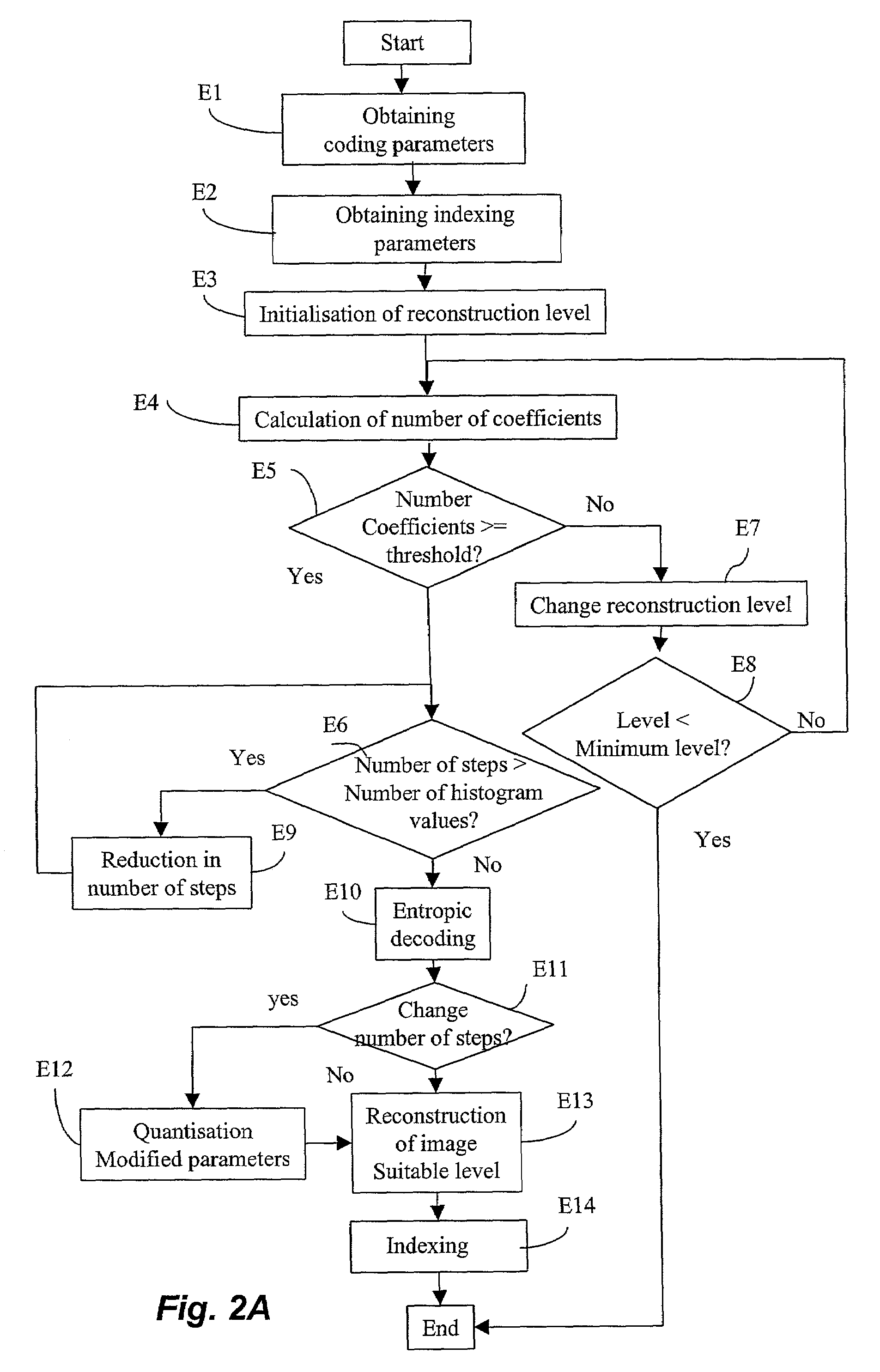Method and device for compressing and/or indexing digital images
a digital image and compression parameter technology, applied in image data processing, instruments, television systems, etc., can solve problems such as inadequate obtaining a histogram representing the content of images, and achieve the effect of reducing or increasing the number of resolution levels
- Summary
- Abstract
- Description
- Claims
- Application Information
AI Technical Summary
Benefits of technology
Problems solved by technology
Method used
Image
Examples
first embodiment
[0083]With reference to FIG. 2a, a description will now be given of the indexing algorithm according to a The code of this flow diagram is for example stored in the ROM memories of the devices of FIGS. 1 and 7.
[0084]When these devices are powered up, the code is loaded into random access memory and executed by the central unit or the controller of the device.
[0085]At step E1, the central unit 301 of the device of FIG. 7, which will be described subsequently, will recover the coding parameters of the image to be indexed. The parameters obtained will in our example be the decomposition levels, the number of quantisation steps. The resolution of the original image is also obtained.
[0086]These parameters are extracted from the bit stream which represents the compressed image. More details on the coding process are given in the description of FIGS. 6a, 6b and 6c.
[0087]Once this operation has been performed, the central unit passes to step E2, which will recover the indexing parameters ...
second embodiment
[0109]A description will now be given of a second embodiment with reference to FIG. 2b. In this variant, the modified compression parameters will be the decomposition level of the signal and the quantisation step of the compressed signal.
[0110]Unlike the first embodiment, the bit stream representing the compressed image will here be changed.
[0111]At step S1, the central unit 301 of the device of FIG. 7 which will be described subsequently will recover the indexing parameters which are in our example the number of columns and number of rows of the grid and the number of values of the histograms. These parameters will be detailed subsequently with reference to FIGS. 4a and 4b.
[0112]Once this operation has been performed, the central unit passes to step S2, which will recover the coding parameters of the image to be indexed. The parameters obtained will in our example be the number of decomposition levels and the number of quantisation steps. The resolution of the original image is al...
third embodiment
[0135]A third embodiment will now be described with reference to FIG. 3.
[0136]In this variant the image to be indexed has not yet been compressed, the compression parameters used will be introduced by the user.
[0137]In particular, the decomposition level and the number of quantisation steps are used in order to check whether the image can be indexed in a compatible manner with the compression parameters input by the user.
[0138]Steps T1 to T9, except for step T2, are identical to steps E1 to E9, and will therefore not be described in this variant.
[0139]Unlike step E2, the obtaining of the coding parameters will consist of interrogating the user by means of the screen 303 of FIG. 7 or 109 of FIG. 1 and obtaining the parameters chosen by the user by means of the input device 112 of FIG. 1 or the keyboard 303 of FIG. 7.
[0140]If the test at step T8 is positive, the central unit goes to step T81. During this step, the image will be compressed according to the initial coding parameters. Th...
PUM
 Login to View More
Login to View More Abstract
Description
Claims
Application Information
 Login to View More
Login to View More - R&D
- Intellectual Property
- Life Sciences
- Materials
- Tech Scout
- Unparalleled Data Quality
- Higher Quality Content
- 60% Fewer Hallucinations
Browse by: Latest US Patents, China's latest patents, Technical Efficacy Thesaurus, Application Domain, Technology Topic, Popular Technical Reports.
© 2025 PatSnap. All rights reserved.Legal|Privacy policy|Modern Slavery Act Transparency Statement|Sitemap|About US| Contact US: help@patsnap.com



